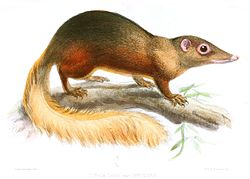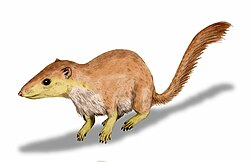| Plesiadapoidea Temporal range: | |
|---|---|
 | |
| Life restoration of Plesiadapis | |
| Scientific classification | |
| Kingdom: | Animalia |
| Phylum: | Chordata |
| Class: | Mammalia |
| Order: | † Plesiadapiformes |
| Superfamily: | † Plesiadapoidea |
| Families | |
Plesiadapoidea was an extinct superfamily of primates that existed during the Paleocene and Eocene in North America, Europe, and Asia. [1] [2] [3] [4]




